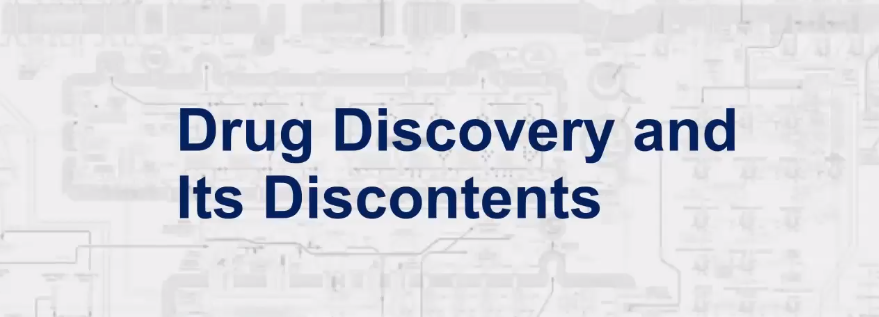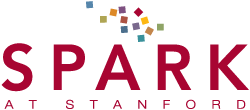Bridging The Gap

Drug Discovery and its Discontents
October 14, 2020
During a recent SPARK Wednesday night lecture, famed blogger Derek Lowe spoke about the evergreen topic of drug discovery – why it is as difficult and weird as it is, and how we can improve it.
Lowe writes commentary on drug discovery and the pharma industry under his popular In The Pipeline blog. He also is director in chemical biology and therapeutics at Novartis Institutes for Biomedical Research (NIBR) and has had a long career as a medicinal chemist in the drug industry.
Lowe began his talk by offering a few analogies to explain drug R&D’s eccentricity and difficulties. A good analogy, he said, is oil exploration, “considering how rare it is to find a really good oil discovery.” Oil discovery, like drug discovery, also gets harder with time as better and easier oil is found. However, oil is fungible – it can be replaced by an identical item, unlike drugs – and has no patent expirations, whereas “we are always listening to the clock tick on our patents.”
He also compared it to Wall Street – but the opposite. Where Wall Street tries to avoid risk, and “go short” on volatility and risk with rare but spectacular blow-ups, instead the drug industry is forced to go long on risk, and “most of the time we fail, but every so often what we do works spectacularly.”
Back to the oil analogy – drug discovery has used up all the low-hanging fruit, or the easy-to-access oil reserves. “The easier direct drug targets and mechanisms, for the most part, have been burned through,” Lowe said. Many early drugs were based on natural products that have all been identified.
Lowe then applied his chemistry expertise to help define drug R&D. The rate at which ideas, or things we want to do, move from speculation to saleable he labeled the rate constant Kinventive. The rate at which those saleable things turn into legacy products – “technology that has been around long enough that it’s more or less free” – are Kgeneric. In between Kinventive and Kgeneric is a narrow profitable zone, or “technology that can be sold for significant amounts of money.”
So what is the drug industry to do? Lowe thinks there’s still enough “neat” ideas out there: “I think we’ve all got a lot of really great things we’d like to be able to do.” He also cautioned that legacy technologies don’t go away easily, such as Lipitor for lowering blood cholesterol, so we can’t look to that rate constant to improve drug discovery.
“Increasing the rate of invention [is] probably still our best shot. But how do you do that?”
Lowe first offered suggestions to improve lead optimization, one of the most expensive components of a drug’s development. Use “applied luck,” he said, and deliver compounds with as few built-in liabilities as possible, as quickly as possible, meaning identifying “what the liabilities of compounds are during the earliest investigative stage possible.” He also suggested applying traditional knowledge to newer and harder drug classes, and moving into nontraditional molecules and modes of action.
Lowe also thinks that target-based drug discovery, while initially fruitful, may have been a detour for drug R&D, because as he reminded us throughout his talk, drug discovery is more complex and harder that we thought.
In other words, “running out of low-hanging fruit will force us to act differently.”
“There are a lot of entire hard target classes we have hardly even touched,” Lowe said, perhaps because we don’t understand them well. These include transcription factors, carbohydrate-protein interactions like glycosylated sites, RNA binding sites, transporter proteins, unusual GPCR mechanisms, and ways of dealing with targeted protein degradation.
To deal with these targets, Lowe suggested sticking with small molecules, be prepared to develop heaps of analogs, “don’t expect modeling to save you,” and instead use real systems as quickly as possible. To get a real system — “if we can’t model our way out of it” — Lowe said the industry needs to use newer assays like mass spectrometry, surface plasmon resonance (SPR), structural biology assays like cryo-EM and electron diffraction, microfluidics, and activity profiling like metabolomics. He added that he likes phenotypic screening, but cautioned the system in which you’re screening must be relevant to the disease and patients.
In response to SPARK advisor Steve Schow asking about the usefulness of going back to whole animal models and screening, which were used successfully many years ago, Lowe said, “the closer to the real system you can get, the better. And it’s hard to get closer than an actual whole animal.”
Lowe’s attitude is that technologies like AI and machine learning could help sort through the large amounts of data that come from these assays, but he also noted, “garbage in, garbage out.”
Lowe suggested there should be more collaboration and crossover between biology and medicinal chemistry. Better targets and greater clinical success rates involve biological problems, but “they’ll need the tools of chemistry to be solved.”
Lowe noted the industry has reason for optimism. Drug discovery’s problems are intellectual, he said, and should therefore have intellectual solutions. Because the industry’s tools lack so much, there’s much room for improvement, Lowe thinks. “We can improve perversely if we were just to go from nine failures out of ten” to eight out of 10, he said.
Many of these ideas align with SPARK’s model. SPARK also emphasizes identifying failures early in development, especially setting go/no-go points throughout early R&D, and using a design thinking approach of beginning with the end in mind. One of SPARK’s main tenets is to provide industry knowledge and technical expertise to academics, and the program marries out-of-the-box academic thinking with industry standards. SPARK’s unique academia-industry partnership involves a lot of collaboration, including between experts in different fields.
Lowe thinks academia can play a role in drug discovery improvement. For instance, he thinks academia is a great place for risky, “blue sky” research projects, and industry should fund more “weirdo blue sky academic research because some of that stuff might pay off.” Public and private granting agencies should deliberately set aside some money to fund high risk, high reward projects.
“Relations between the academic labs and drug company labs are probably as good as they’ve been,” Lowe said, but to take it even farther, he thinks there should be more crossover – more drug company people should take academic positions, and more academics should go into industry.
SPARK founder and co-director Daria Mochly-Rosen noted that about 60% of the SPARK audience that night were industry and about 40% were academia.
